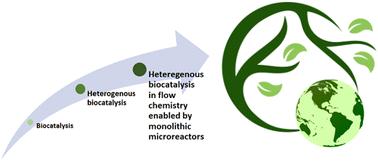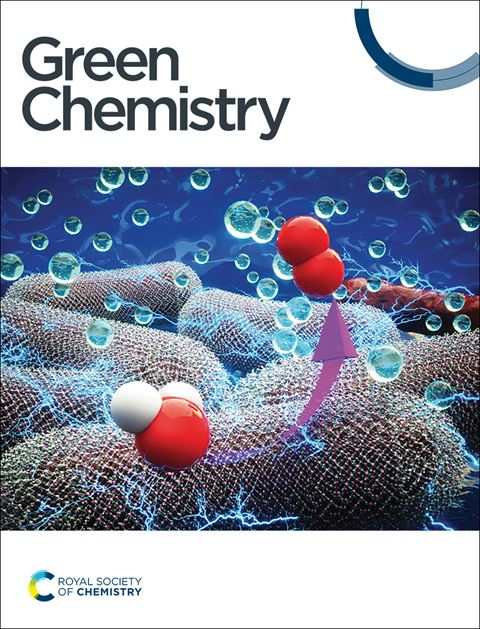Monoliths enabling biocatalysis in flow chemistry
IF 9.3
1区 化学
Q1 CHEMISTRY, MULTIDISCIPLINARY
引用次数: 0
Abstract
This is a review on the feasibility of monolithic porous supports in biocatalysis carried out in a continuous flow system. It discusses factors affecting the efficiency and stability of enzyme immobilisation, kinetic parameters of enzyme processes carried out inside a monolith, biocatalysis in single and two-phase systems, and cascade reactions including cofactor regeneration. It also covers materials engineering (monolith types) and issues related to the flow of reactants through the monolith (chemical engineering). Emphasis is placed on the fact that the application of (bio)catalysis improves selectivity and atom economy, thus lowering the E factor. However, biocatalysts need to be employed in a reactor, which can aid further improvement towards green chemistry goals. The application of enzymes in flow chemistry has been shown to lead to higher space time yields (STYs) compared to batch reactions. In particular, with monolithic reactors a drastic decrease in volume and thus solvent can be achieved. By immobilising very high densities of enzymes directly on the monolith, reaction times dwindle, improving STYs. The small reaction volumes enable excellent heat transfer, helping to save energy. The underlying principles of monolithic flow reactors and their application in mono- and bi-phasic biocatalytic systems will be examined.

在流动化学中实现生物催化的单片机
本文综述了在连续流动系统中进行生物催化时使用整体多孔支撑物的可行性。它讨论了影响酶固定效率和稳定性的因素、在整体石内进行的酶过程的动力学参数、单相和两相系统中的生物催化以及包括辅助因子再生在内的级联反应。该课程还涉及材料工程(单体类型)和反应物流经单体的相关问题(化学工程)。重点在于(生物)催化的应用提高了选择性和原子经济性,从而降低了 E 因子。不过,生物催化剂需要在反应器中使用,这有助于进一步提高绿色化学目标。与间歇反应相比,在流动化学中应用酶可提高时空产率(STYs)。特别是,使用整体反应器可以大幅减少体积,从而减少溶剂。通过将高密度的酶直接固定在整体反应器上,缩短了反应时间,提高了 STY。反应体积小,传热效果好,有助于节约能源。我们将探讨整体流动反应器的基本原理及其在单相和双相生物催化系统中的应用。
本文章由计算机程序翻译,如有差异,请以英文原文为准。
求助全文
约1分钟内获得全文
求助全文
来源期刊

Green Chemistry
化学-化学综合
CiteScore
16.10
自引率
7.10%
发文量
677
审稿时长
1.4 months
期刊介绍:
Green Chemistry is a journal that provides a unique forum for the publication of innovative research on the development of alternative green and sustainable technologies. The scope of Green Chemistry is based on the definition proposed by Anastas and Warner (Green Chemistry: Theory and Practice, P T Anastas and J C Warner, Oxford University Press, Oxford, 1998), which defines green chemistry as the utilisation of a set of principles that reduces or eliminates the use or generation of hazardous substances in the design, manufacture and application of chemical products. Green Chemistry aims to reduce the environmental impact of the chemical enterprise by developing a technology base that is inherently non-toxic to living things and the environment. The journal welcomes submissions on all aspects of research relating to this endeavor and publishes original and significant cutting-edge research that is likely to be of wide general appeal. For a work to be published, it must present a significant advance in green chemistry, including a comparison with existing methods and a demonstration of advantages over those methods.
 求助内容:
求助内容: 应助结果提醒方式:
应助结果提醒方式:


